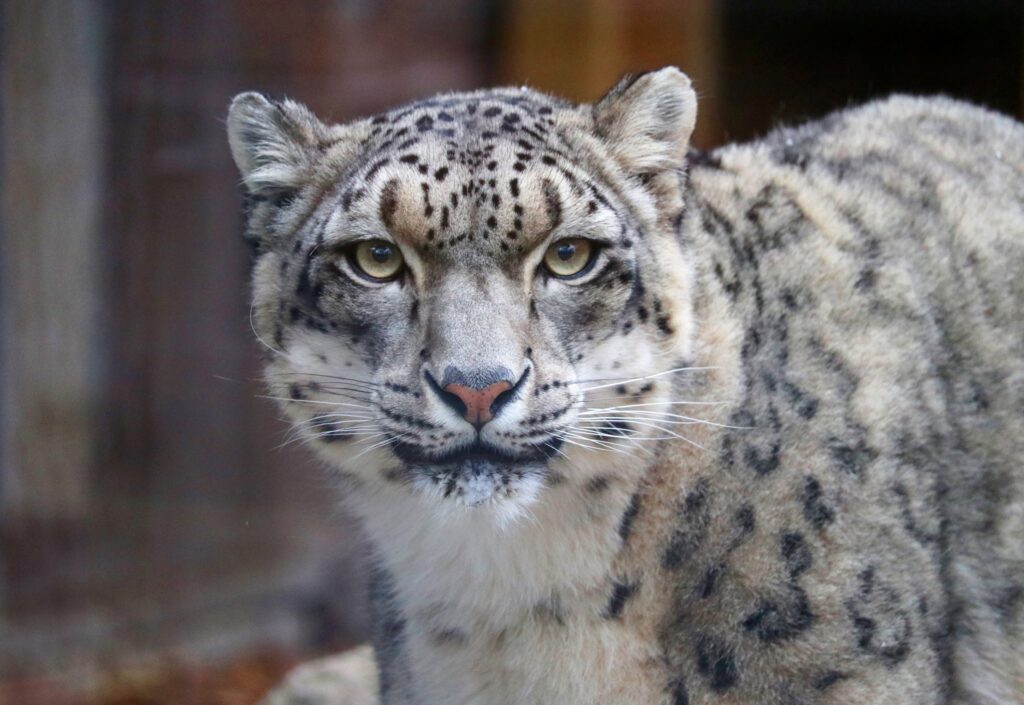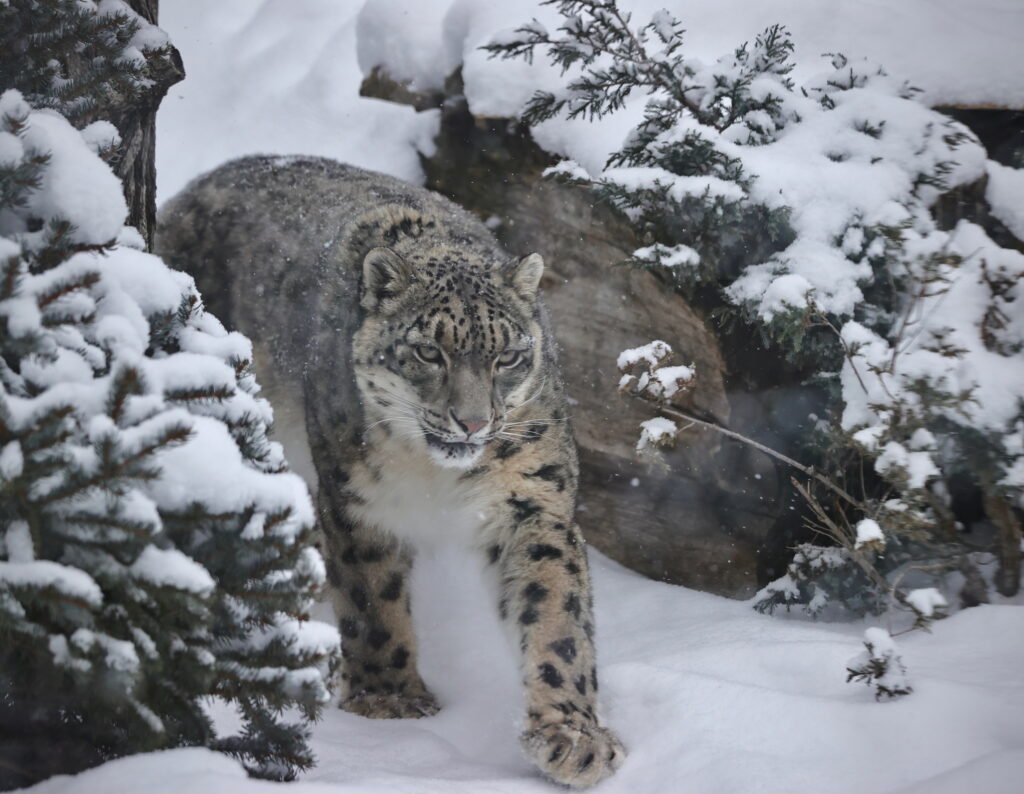
Prowl, prowl, purr, purr! Visitors watch a snow leopards leap from a snowy rock, searching for its next meal.
Snow leopards are originally found in high rugged mountain ranges in Central and South Asia.
But for fifteen-year-old male snow leopard Kaba and nine-year-old female Timila, their home is the Seneca Park Zoo.
Timila was born in May 2016 at the Metro Richmond Zoo in Virginia, and Kaba was born in May 2010 at the Cape May County Zoo in New Jersey. Snow leopards can live up to twenty years in conservation care—about twice as long as they would in their natural range. This means Kaba and Timila have many more years to climb, play, and teach visitors why it’s important to protect snow leopards in nature.
“Most of the outdoor exhibits have an open top to them, but the snow leopard yard is fully enclosed with a mesh top on it, because snow leopards are agile climbers and excellent jumpers,” says zookeeper Heidi Beifus, “It also has hills and rocky outcroppings similar to what they would have in nature.”
Snow leopards tend to prefer cooler climates, so at this exhibit visitors can see Kaba and Timila laying high up in trees and perches.
To help keep them comfortable, their habitat has shady spots with fans, misters, and even sprinklers that turn on during warm days. This way, the snow leopards can stay cool while visitors get a closer look at these amazing animals. When someone visits the habitat, Kaba and Timila may not be springing off of the perches. Instead, they may find them sleeping and lounging. This is because snow leopards are mainly active around dawn or dusk, and sometimes they are hard to spot in the wild. This makes mornings a great time to visit the Zoo.

These active cats can be loud; however, snow leopards cannot actually roar! Since they have under-developed vocal tissue, Kaba and Timila find other ways to communicate. “Snow leopards use many ways to communicate with each other, such as vocalizations, body postures, facial expressions, and marking. Yowling is for searching and signaling to others from a distance to help them find each other. Chuffing, rubbing on objects, and rolling around are all friendly and inviting gestures,” Beifus says. “Growling, snarling, and hissing, with ears pinned back and down, are warnings to stay away. They mark their territories, to give information about themselves to others by spraying and urinating in and around their areas.”
Even though Kaba and Timila are safe in the park, they are often at risk in their natural range. Snow leopards are listed as a vulnerable species, which means they are at high risk of extinction. The main reasons for this are human conflict like poaching, mining, and climate change. Snow leopard cubs also have a tough start in life. When they are born their eyes are closed for the first one to two weeks, and they are totally dependent on their mother. Snow leopard mothers spend lots of time grooming, feeding, and keeping their babies protected.
Once they are a couple of months old, their mother starts to add meat and solid foods into their diet. After a few months they begin to follow her and learn to hunt. At two years old, they know everything they need to survive on their own. “Cubs grow up very quickly,” says Beifus. These snowy cats can grow to be the size of you and me! Female snow leopards tend to weigh around 60 –85 pounds, while males weigh between 90–115 pounds. “Their long thick tails are almost the length of their body!” mentions Biefus. Since these prowlers get so big, safety always comes first at the zoo. Visitors may see Kaba and Timila being fed, but no zookeeper ever goes inside their habitat.
“We secure them on one side while we put their food on the other, then we let them over to find it and eat,” explains Beifus. “We can even feed them up close by placing food on long tongs and offering it through the mesh.”
From their powerful leaps and long, thick tails to their playful cubs and unique ways of communicating, snow leopards are remarkable creatures. By learning about them and supporting efforts to protect them in the wild, we can help make sure future generations of snow leopards have rocks to climb, shady places to rest, and plenty of space to prowl, purr, and play.
Next time you visit the Seneca Park Zoo, take a moment to visit Kaba and Timila—or find them on senecaparkzoo.org.
This article originally appeared in the Fall 2025 issue of (585) Kids.
Views: 3




